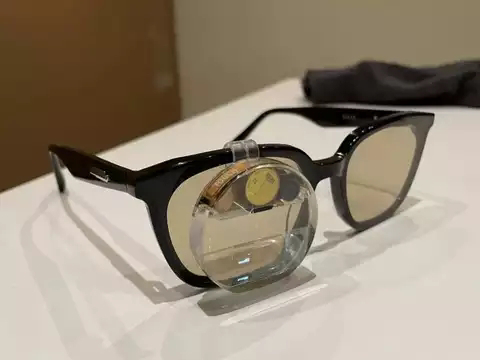In an impressive feat of technological innovation, a team of Stanford University students has built a prototype of ChatGPT, a next-generation conversational AI, into augmented reality (AR) glasses.
The ChatGPT is a cutting-edge AI model designed by OpenAI, a leading AI research laboratory. It uses deep learning to generate human-like responses to text prompts, and has been used in a variety of applications such as chatbots, customer service, and language translation.
The Stanford students took this technology to the next level by integrating it into AR glasses, allowing users to have natural and interactive conversations with the AI as if it was a real person. The glasses are equipped with microphones and cameras that pick up the user's voice and movements, allowing the AI to respond in real-time.
The students worked on the project for several months, and faced numerous technical challenges along the way. They had to create a customized interface for the AR glasses, which involved programming in C++, Python, and TensorFlow. They also had to optimize the AI model to work efficiently on the glasses' hardware, which required a deep understanding of both software and hardware engineering.
Despite these challenges, the students were able to successfully build a working prototype of the ChatGPT AR glasses. They demonstrated the technology to a group of industry experts and investors, who were impressed by its potential applications in fields such as education, healthcare, and gaming.
One of the most exciting possibilities for the technology is in education. The glasses could be used to provide personalized tutoring and instruction, allowing students to learn at their own pace and receive immediate feedback. The AI could also assist teachers in answering students' questions and providing additional resources.
In healthcare, the glasses could be used to improve communication between patients and medical professionals. Patients could use the AI to ask questions about their condition, medications, and treatment options, and receive personalized advice and guidance. Medical professionals could use the AI to access patient records and data, allowing them to make more informed decisions about treatment.
In gaming, the glasses could be used to create immersive and interactive experiences. Players could have conversations with AI characters that respond in real-time, making the gameplay feel more lifelike and engaging.
The potential applications of the ChatGPT AR glasses are vast, and the technology is still in its early stages. However, the Stanford students' prototype represents a major step forward in the development of conversational AI and augmented reality.
The project also highlights the importance of interdisciplinary collaboration in technology development. The students came from a variety of academic backgrounds, including computer science, electrical engineering, and psychology. By working together and leveraging their diverse expertise, they were able to create something truly innovative and groundbreaking.
As the field of AI continues to evolve, we can expect to see more exciting developments like the ChatGPT AR glasses. The technology has the potential to revolutionize the way we interact with computers and machines, and could have profound implications for a wide range of industries and fields.
Pioneering Communication in Lucid Dreams: REMspace's Historic Achievement Silicon Valley startup REMspace has reached a remarkable milestone by enabling the first-ever communication between two individuals in separate lucid dreams. This innovative feat not only expands our understanding of sleep but also opens new avenues for dream-based interaction. How It Works: The Science of Dream Communication On September 24, 2024, two participants engaged in a groundbreaking experiment while they slept in their own homes. Utilizing advanced neurotechnology, their brain activity was monitored as they entered lucid dream states—moments when they are aware they are dreaming and can often exert some control over their dreams. In the experiment, once the first participant became lucid, they received a “Remmyo” word through earbuds. The participant then repeated this word in their dream, and the response was recorded on a server. Shortly after, the second participant, also ...




Comments
Post a Comment
Thanks for reading my Blogs or articles